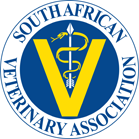Original Research
Diagnosis of feline haemoplasma infection using a real-time PCR assay
Journal of the South African Veterinary Association | Vol 75, No 2 | a460 |
DOI: https://doi.org/10.4102/jsava.v75i2.460
| © 2004 R.G. Lobetti, S. Tasker
| This work is licensed under CC Attribution 4.0
Submitted: 19 June 2004 | Published: 19 June 2004
Submitted: 19 June 2004 | Published: 19 June 2004
About the author(s)
R.G. Lobetti,S. Tasker,
Full Text:
PDF (323KB)Abstract
Haemobartonella felis has been reclassified within the genus Mycoplasma as Mycoplasma haemofelis and 'Candidatus Mycoplasma haemominutum', collectively referred to as the feline haemoplasmas. A total of 78 cats from the Johannesburg area that had blood samples submitted to a private veterinary laboratory were tested using a real-time polymerase chain reaction (PCR) assay able to detect and distinguish the two feline haemoplasma (basonym Haemobartonella) species. All samples had been diagnosed with haemoplasma infection by cytological examination of blood smears. Statistical analysis was performed to evaluate associations between haemoplasma status, age, and haematological and biochemical parameters. On PCR assay 43 cats (55 %) were haemoplasma negative, 25 (32.1 %) positive for 'Candidatus Mycoplasma haemominutum', 5 (6.4 %) positive for Mycoplasma haemofelis and 5 (6.4 %) positive for both species. Significant inverse correlation was found between the amount of M. haemofelis DNA present in the blood and the haematocrit value. Cats that were positive for M. haemofelis showed macrocytic regenerative anaemia, monocytosis and thrombocytopaenia. This report documents the existence of both haemoplasma species in cats in South Africa.
Keywords
Cat; Haematology; Haemobartonella Felis; Haemoplasma; PCR
Metrics
Total abstract views: 2989Total article views: 2955
